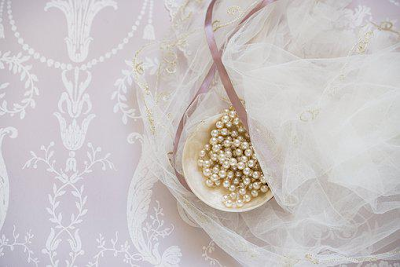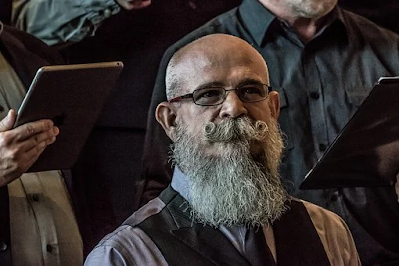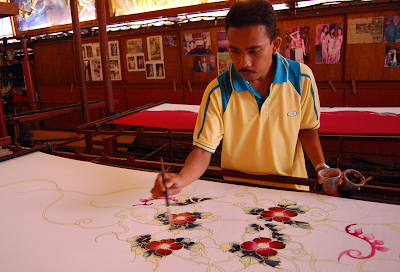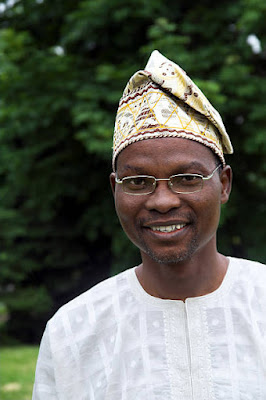Featured
- Get link
- X
- Other Apps
HISTORY OF DRESS IN NORTH AFRICA
North Africa includes Egypt and the countries to the west, known in Arabic as al-Maghrib, meaning “the region of sunset”: Libya, Tunisia, Algeria, and Morocco.
These political boundaries were basically created by the Ottomans in the sixteenth century, but throughout history this area of Africa has been influenced by, and has had a significant effect upon, the regions that surround it: the Mediterranean, sub-Saharan Africa, and the Middle East.
It is difficult to understand one area without knowing something of the history of all; the style and patterning of clothing offers one way of interpreting that history.
History, Geography, and Climate.
The climate and geography of North Africa is extremely diverse.
The summits of the High Atlas mountains of Morocco rise above 13,000 feet, while oasis in the depressions of the Libyan Desert fall to sea level or lower.
The moderate, temperate weather of the Mediterranean and Atlantic coastlines give way to the scorching midday heat and cold overnight temperatures of the desert regions to the south.
Crops and plants flourish in the rich northern plains and along the Nile valley, while virtually anything grows in the desert except in the lush oasis where the water table is near to the surface.
Ancient Egyptian art provides us a pretty comprehensive image of how people in this area of North Africa dressed, as least as far back as 5000 B.C.E.
Elsewhere, the extraordinary rock paintings of the Sahara, the Atlas Mountains, and the Nile valley, dating from c. 12000 to 3000 B.C.E., give us an idea of how people might have dressed when the interior of North Africa had a much wetter climate, supporting animals such as hippos, elephants, giraffes, and rhinos.
In the ninth century B.C .E., Carthage was founded near the modern city of Tunis; the Carthaginians traded cloth and other luxury goods across the Sahara in exchange for slaves, gold, and ivory, a pattern continued by the Romans following the sacking of Carthage in 146 B. C.E., only declining when the Portuguese and other Europeans began to trade along the west coast of Africa in the fifteenth century.
Roman mosaic pavements from Carthage depict clothes that bore a striking resemblance to tunics used in the early twenty-first century as part of a woman’s bridal attire in the Tunisian town of Mahdia.
In the seventh century, Muslim armies invaded North Africa and began the process that, despite resistance from the indigenous Berber peoples, culminated in the establishment of the Hispano-Moresque civilization; this society flourished in the Maghrib countries and southern Spain until the fall of Granada to Christian armies in 1492.
After that incident, many Muslim and Jewish craftsmen, including weavers and embroiderers, sought shelter in the major cities of North Africa, and at this time, a specific pattern of production, utilization of materials, and division of labor, which has remained largely unaltered, was created.
Town and Country
At first sight, individuals in any North African city's marketplace, from Cairo to Marrakech, are dressed no differently from city inhabitants in any other area of the globe.
A suit and tie, or perhaps a “safari” outfit, is worn by many male professionals and office employees.
Many women dress in a traditional two-piece top and skirt, but the Hijab, or Islamic head covering, is worn by the majority.
Jeans, T-shirts, and football shirts are worn by younger individuals of both sexes.
People, however, wear more clearly local styles among these increasingly ubiquitous "Western" clothes.
In Cairo, many working men wear the djellaba, a long, loose-fitting gown, often with the kaffiyeh, a turbanlike head covering or cotton skullcap; elderly ladies may wear the burqa and bedla, a black headdress and flowing garment.
The red felt chechiya, a mix between a skullcap and a beret, is still the most recognizable piece of male clothing in Tunisian cities, while the burnoose, a hooded cloak, is worn by many men across the Maghrib.
Single-piece draped or wrapped clothing for women, fastened by a fibula, or cloak pin, have largely replaced cut and stitched garments in rural areas.
Berber women in Morocco's Atlas Mountains wear ornate headdresses on special occasions, while men herd their sheep in huge woolen cloaks or knitted "long johns" in the winter.
Women in rural areas throughout North Africa often wear so-called "granny" gowns with "foreign" features like cuffs, collars, pockets, and pleated hems.
Many other areas of the globe, notably the Pacific Ocean islands, have variations on this design based on European costumes from the eighteenth and nineteenth centuries.
The clothes used for important events, especially weddings, highlight the true contrasts between urban and rural styles.
Marriage Costume
Marriage is seen as the ideal adult condition in North Africa, as it is in all Muslim cultures.
Clothing for the bride and groom symbolizes their new social position as well as worries about modesty and fertility; probably most significantly, clothing is regarded as a means of easing the transition from single to married.
The popularity of "traditional" clothing has varied throughout postcolonial Africa, depending on political, religious, and economic conditions.
The white European wedding gown has become popular due to fashion and the need to seem contemporary, but many dress designers have created designs that combine both old and new elements, fulfilling the desire to be both stylish and culturally conscious.
Certain wedding garments in North Africa are named after one or more of the ceremonies that mark the various days of the wedding festivities; for example, mwashma (painted), an elaborately embroidered dress from the Tunisian village of Raf Raf, evokes the laylat al-henna, or "night of henna," in which the bride and groom are tattooed with henna to bless their marriage and encourage the birth of children.
Simple, T-shaped cotton tunics worn by brides in Siwa, Egypt; Ghada–mis, Libya; and Mahdia, Tunisia, are likely descended from specific clothes shown in Roman Carthage mosaics.
These loose-fitting, ornately adorned gowns are intended to highlight the bride's rank and attractiveness while maintaining her modesty; they may also conceal up to seven more garments underneath them, which are shown to the bride's and subsequently to the groom's family during the jilwa ritual.
Similar patterns go by various names in different parts of North Africa, and they don't always have the same meaning.
However, common concerns about protecting oneself from harm—and, by extension, encouraging good fortune, health, and fertility—inform the patterning of objects throughout the area.
Concerns about the negative consequences of jealousy, centered on beliefs about the evil eye, are often manifested in the form of patterning applied to wedding gowns in particular, but similar patterns may serve a variety of other purposes.
The bakhnuq, a marriage shawl from southern Tunisia, is made of a wool and cotton blend that exposes white cotton patterns that are resistant to dye when colored.
These designs evoke jewelry and women's tattoo patterns, as well as snake vertebrae and pointed cloak pins used to ward off or penetrate the evil eye.
The various hues of the bakhnuq have historically been used to signify a woman's status: young, unmarried girls wear white, married women of childbearing age wear red, and elderly women wear black or blue.
With the exception of the oasis of Siwa, the wedding gowns of ladies from the Western Desert of Egypt have striking resemblance to the embroidered garments of Palestine, indicating a deep historical link between the two areas.
In the 2000s, these gowns were exclusively worn by elderly women, but they still show the unique patterning, color, and embroidery technique that each oasis, and sometimes even specific towns within the same oasis, is known for.
The embroidered bodices of these gowns, which are sometimes adorned with many sequins and tiny coins to ward off the evil eye, are a certain method of identifying the wearer's identity and allegiance.
The bodices of Bahriya oasis dresses, for example, are invariably made up of rectangular embroidery areas with distinct tassels on the shoulders and chest; the dresses of Daqahl –ya oasis, on the other hand, have a very different pattern of embroidery on the bodice, with a central section tapering to a point.
Similar concerns are reflected in the patterning used on men's clothing.
Named motifs, such as "birds with their young" and "a table of guests," are woven by women for their sons in the remote M'zab region of southern Algeria, emphasizing fertility and harmony; other motifs, such as forks and weaving combs, have the added dimension of sharp implements with the ability to pierce the evil eye.
Dress as if you're a historical document.
The patterning, color, style, and design of North African dress and textiles provide clues that can be pieced together through painstaking research to provide a more detailed and reliable picture of the past than any written record.
Few, if any, of the distinguishing characteristics of dress occur by chance or whim; many relate to people's movements as a result of warfare, religious persecution, trade, economic necessity, or natural disaster.
Each event is recorded in a series of details that have gradually evolved into the form of modern dress.
This story often goes back many centuries, perhaps even beyond both the region and the African continent.
The ornate, hand-embroidered wedding gowns worn by Jewish women in metropolitan Morocco are developments of the nineteenth-century extravagant, hand-embroidered garments.
These, in turn, may be traced back to late Hispano-Moresque Spanish forms, which were introduced to Morocco by Jewish artisans driven from Andalusia during Christian persecution in the 15th and 16th centuries.
These artisans settled not just in Morocco, but also in the Maghrib's main cities.
Ottoman influence started to expand across the area in the sixteenth century, and many of the floral patterns seen on textiles, such as the tanshifa of Algeria and the 'ajar and rida' ahmar of Tunisia, are Turkish in origin.
The first two are no longer worn, but the rida' ahmar is still the most prominent piece of apparel worn by Mahdia ladies.
A pair of pattern bands woven in silk and gold thread are weaved at either end of this silk bridal veil.
The central band, known as dar-alwust (literally "the house in the middle"), depicts a mosque in stylized form; at the opposite end of the cloth, the dar-alwust features two motifs in the form of the Star of David, an element of the design that Muslim weavers continue to include out of respect for the Jewish weavers who once produced this garment.
Female weavers in Egypt's Nile valley's ancient silk-weaving village of Naqâda create a shawl type with a similarly complicated history.
Male weavers of the nineteenth century produced the aba, a man's gown, as well as other garments such as the cotton and silk modesty garment worn by women of the Bahriya oasis in Egypt's Western Desert until it went out of fashion in the mid-twentieth century, using a tapestry weave technique widely practiced in Damascus and elsewhere in the Levant.
In recent years, a group of female weavers has begun to make this shawl, using the same looms and weaving methods as before, but in garish, two-tone rayon rather of silk and cotton.
Initially, their new markets were in Libya and Sudan, but as they dried up due to political tensions between the three countries, the ladies turned to the tourist trade in Cairo, where their fabrics are now sold to a variety of European nations.
Weavers and embroiderers in many regions of North Africa continue to create distinctive ceremonial garments, demonstrating the vitality with which African textile traditions have evolved since antiquity.
Despite the obvious influences that have shaped North African civilizations, an internal dynamic has molded these components into each region's unique material culture.
Find Jai on Twitter | LinkedIn | Instagram
- Get link
- X
- Other Apps














